December order ( 4 of 4 )
in OrdersLast dram-order, a few (21) drams from Master of Malt, so I have something to write about on the weeks to come. :)
 Share your thoughts!
Share your thoughts! 

Last dram-order, a few (21) drams from Master of Malt, so I have something to write about on the weeks to come. :)
 Share your thoughts!
Share your thoughts! At last I got my bottle of Highland Park and my bottle of Glenugie, the last whisky to have one whisky from each distillery of Scotland. Yay!
The order is composed of:
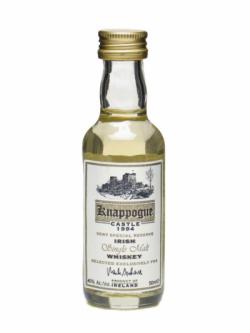
This dram has a white-like color.
Nose (80): inexistent. light, sweet barley, mango, banana, some vanilla, a bit sherry. First nosing data is innacurate as the previous tasting sheet lacked of this field.
Palate (84): . hot, sweet for a second and then dry, wood, vanilla, grass and dry again. Bouquet data is innacurate as the previous tasting sheet lacked of this field.
Finish (76): no finish. floral and vanilla, a little sweet and some wood. Finish length is innacurate as the previous tasting sheet lacked of this field.
So based on other whiskies I have already tasted I rate this Knappogue Castle 1994 with 80 points over 100.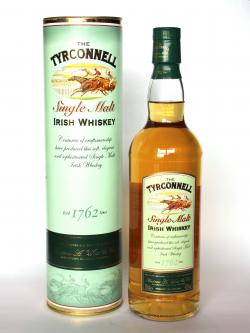
This dram has a white-like color.
Nose (88): inexistent. grain, malt, fruit: grapes, some sherry. First nosing data is innacurate as the previous tasting sheet lacked of this field.
Palate (92): . sweet, honey, wood, vanilla, something toasted, hot. Bouquet data is innacurate as the previous tasting sheet lacked of this field.
Finish (88): no finish. grapes, sweet, spices: pepper. Finish length is innacurate as the previous tasting sheet lacked of this field.
So based on other whiskies I have already tasted I rate this Tyrconnell Irish Whiskey with 89 points over 100.
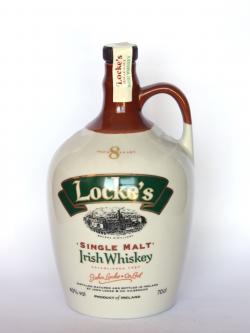
This dram has a white-like color.
Nose (80): inexistent. barley, fruit, peach and cherries, a little honey, peat. First nosing data is innacurate as the previous tasting sheet lacked of this field.
Palate (88): . sweet, wood, honey, fruit: peach, mango, tropical fruits and barley. Bouquet data is innacurate as the previous tasting sheet lacked of this field.
Finish (84): no finish. honey, vanilla and barley. Finish length is innacurate as the previous tasting sheet lacked of this field.
So based on other whiskies I have already tasted I rate this Locke's 8 year with 84 points over 100.
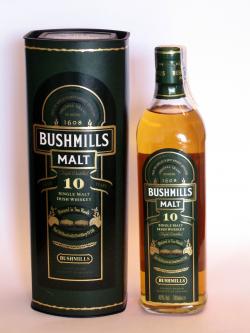
This dram has a white-like color.
Nose (76): inexistent. many corn, grain, a little sweetness, grass, pineapple, raisins. First nosing data is innacurate as the previous tasting sheet lacked of this field.
Palate (76): . sweet, honey, wood. Bouquet data is innacurate as the previous tasting sheet lacked of this field.
Finish (84): no finish. some wood and honey. Finish length is innacurate as the previous tasting sheet lacked of this field.
So based on other whiskies I have already tasted I rate this Bushmills Malt 10 year with 79 points over 100.
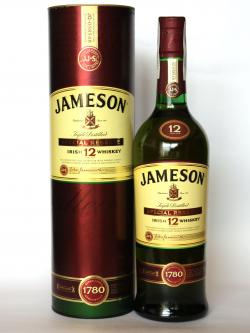
This dram has a white-like color.
Nose (80): inexistent. grain, barley, fruit, grapes. First nosing data is innacurate as the previous tasting sheet lacked of this field.
Palate (84): . sweet, wood, grapes, honey and vanilla. Bouquet data is innacurate as the previous tasting sheet lacked of this field.
Finish (84): no finish. vanilla and honey. Finish length is innacurate as the previous tasting sheet lacked of this field.
So based on other whiskies I have already tasted I rate this Jameson 12 year Special Reserve with 83 points over 100.
In less than 10 seconds, which whisky was aged in a sherry cask? :D
You can’t smell color, you can’t taste it, but admit that it has a huge psychological effect in buying decisions. I love the color of the Sherry cask bottle.
By the way, they are St George English whisky Chapters 7 and 10.
Happy Christmas to you all!.
That Santa brings you all good whisky and great moments.
Best regards,
Miguel
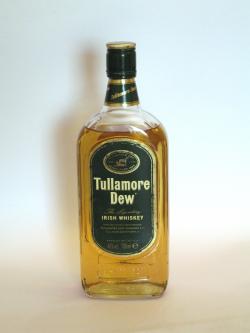
This dram has a white-like color.
Nose (68): inexistent. alcohol, vanilla, cherries and honey. First nosing data is innacurate as the previous tasting sheet lacked of this field.
Palate (76): . light. grain, sweet, honey. Bouquet data is innacurate as the previous tasting sheet lacked of this field.
Finish (76): no finish. grain and honey. Finish length is innacurate as the previous tasting sheet lacked of this field.
So based on other whiskies I have already tasted I rate this Tullamore Dew Blend with 73 points over 100.
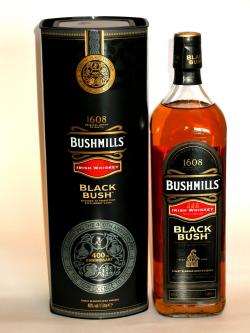
This dram has a white-like color.
Nose (68): inexistent. grain, sweet, somegrain, fruity, apple. First nosing data is innacurate as the previous tasting sheet lacked of this field.
Palate (88): . grain and vanilla. it is not a sweet whiskey. Bouquet data is innacurate as the previous tasting sheet lacked of this field.
Finish (76): no finish. grain. Finish length is innacurate as the previous tasting sheet lacked of this field.
So based on other whiskies I have already tasted I rate this Bushmills Black Bush with 77 points over 100.
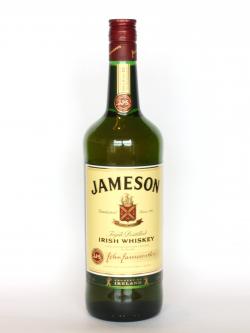
This dram has a white-like color.
Nose (72): inexistent. barley, malt sweetness, vanilla, alcohol, fruity. First nosing data is innacurate as the previous tasting sheet lacked of this field.
Palate (84): . vanilla, honey, grain. it is moderately hot. Bouquet data is innacurate as the previous tasting sheet lacked of this field.
Finish (76): no finish. honey and barley, sweet. Finish length is innacurate as the previous tasting sheet lacked of this field.
So based on other whiskies I have already tasted I rate this Jameson with 77 points over 100.
 The name is an anglicisation of the ancient gaelic term uisce beatha that literally means water of life. It is believed to be one of the first distillate drinks made in Europe dating to mid 12th century. The art of distilling was introduced into Europe by missionary irish monks who probably learn it from arabs that used it to create medicines and parfums
The name is an anglicisation of the ancient gaelic term uisce beatha that literally means water of life. It is believed to be one of the first distillate drinks made in Europe dating to mid 12th century. The art of distilling was introduced into Europe by missionary irish monks who probably learn it from arabs that used it to create medicines and parfums
Old Bushmills claims to be the oldest licensed distillery in the world since graining a license from James I in 1608, although whisky production didn’t started until late 18th century. In fact, it was Sir Thomas Philips the governor in Ulster who got the monopoly to make whisky from James I and from here Bushmills draw its founding. ( Thanks to Anders Gjörling for the correction )

All irish whiskey is distilled three times, peat is rarely used on the malting process and usually has a high proportion of unmalted barley. These facts makes irish whiskey lighter, smoother and more grainy than Scotch. Irish whiskey is distilled through column stills and pot stills. Although it is still possible to find some pure pot stills whiskeys.
Ireland has now only four distilleries, of the almost thousands of stills that there were at late 19th century.
Each distillery provides a good amount of different whiskeys profiles:

Mammoth Irish Distillers Company, IDC, distillery at Cork.
Produces Jameson, Powers, Paddy, Midleton, Redbreast, Greenspot and other whiskies.
Produces Bushmills whisky.
Produces Connemara, only irish peated whisky, Kilbeggan, Michael Collins, Tyrconnell
There are also many brands like: Tullamore Dew, The irishman, Knappogue Castle, etc.

Irish pot stills are bigger than scottish ones and they put more emphasis on the process and the casks than in the skills of the Master Blender.
The imposition of an excise tax in 1661 had the same effect as it did in Scotland, with the immediate production of poteen, an irish kind of newmake. The excise tax didn’t slow down the growth of the industry and by the end of the 18th century there were two thousands stills in operation in Ireland.
Under British rule, Ireland whiskey production was export oriented and it outsold scotch whisky in most markets because of its lighter body. Over four hundred brands of Irish whiskey were sold in the USA in the late 19th century.
The fall down of the Irish distilling industry can be explained by several facts.
Ireland distillers were slow to respond to the rise of blended scotch whisky that was a lot of lighter than single malts, targeting the same market that irish whiskey were ruling then.
The Prohibition Era in the USA hurt exports tremendously and most of the small distillers had to close its doors. The others were not ready to anticipate the Repeal and were caught short of supplies, making easy for blended scotch to take their markets.
Great depression, trade embargoes between newly independent Republic of Ireland and the United Kingdom and the WWII caused further havoc among the remaining distillers.
In 1966 three remaining distilling companies – Powers, Jameson and Cork – merged into a single company, Irish Distillers Company. Just six years later Bushmills joined IDC and all the distilleries of the island was under a single company hands.
Three years later, in 1975, following the great rules of the market, to reduce costs and improve efficiency, a new mammoth distillery was built at Midleton, in Cork and all the production of irish whiskey was transfered there.
Fortunately, in 1989, Cooley Distillery started producing malt and grain whiskey ( and of a great quality by the way ) breaking the monopoly of whiskey production in Ireland.
Here are some bottles from my collection of Irish whisky. Some of them has tasting notes.
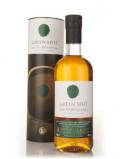
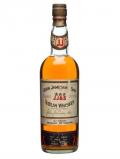
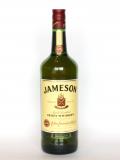
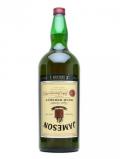
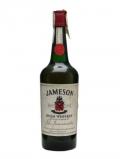
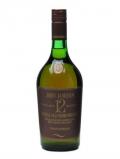

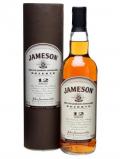
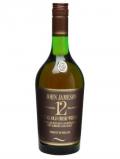

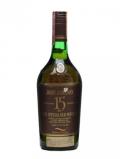

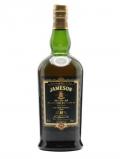
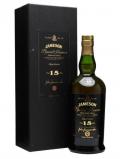
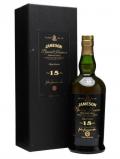
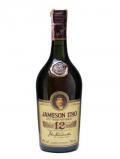
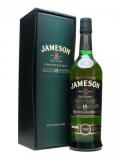
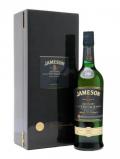
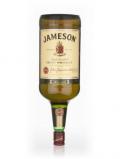
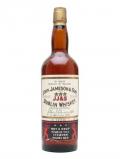
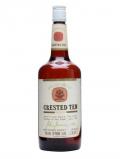
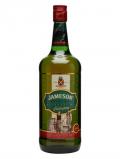

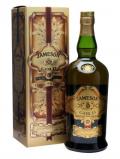

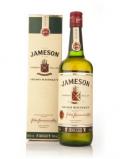
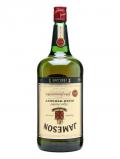
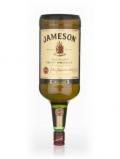
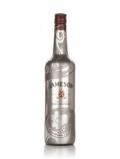
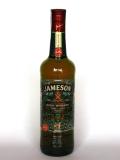
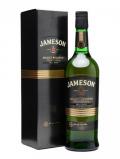
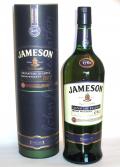
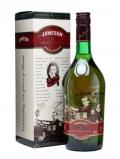
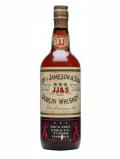
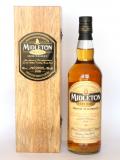
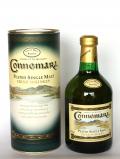

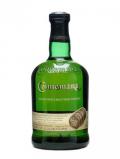
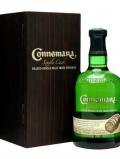

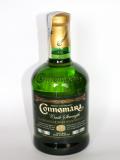
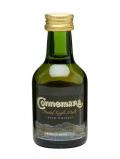
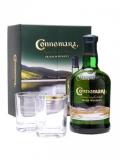
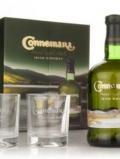
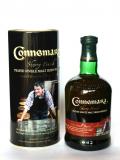
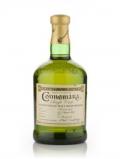
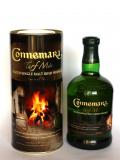
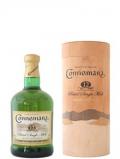
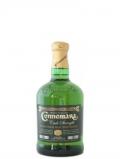
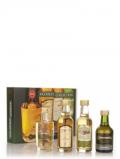
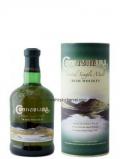
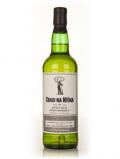
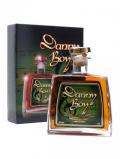
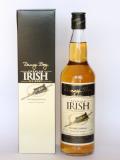
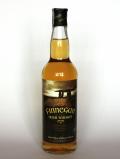
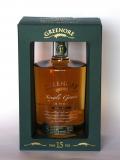

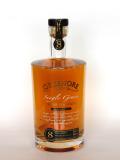
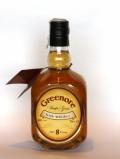
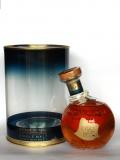
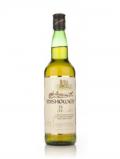
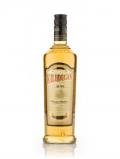
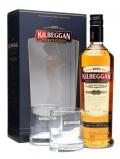
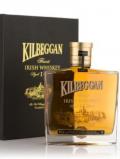
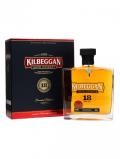

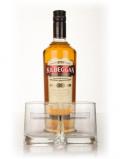
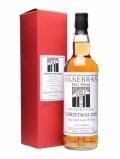
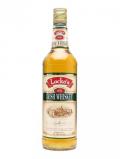
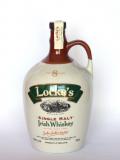
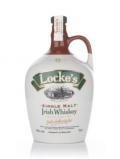
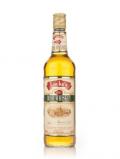

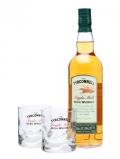
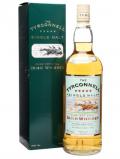
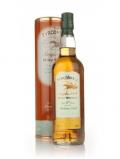
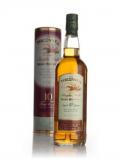
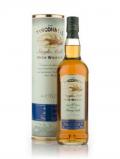
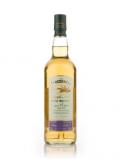
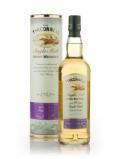
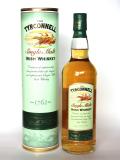
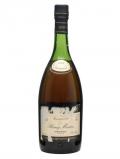


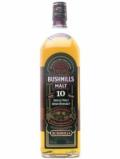
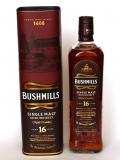
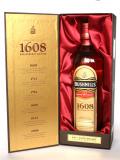
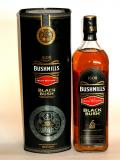
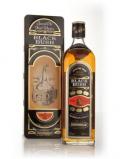
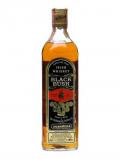

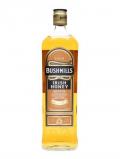
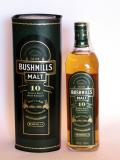
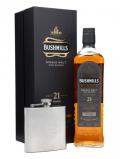
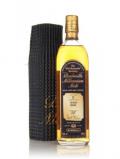
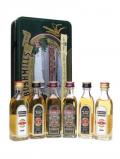
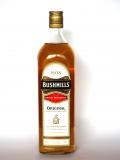
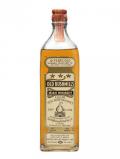

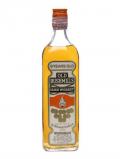
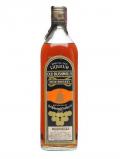
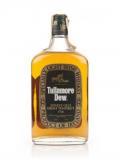
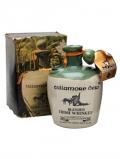
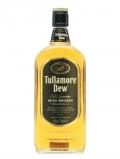
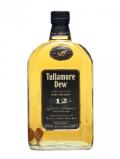
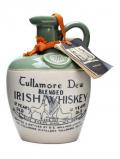
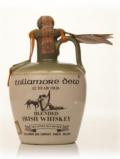
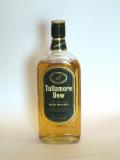
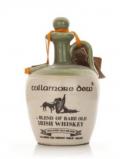
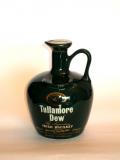
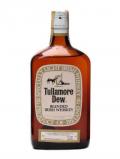
Hoo! Hoo! Hooo! I am a step nearer to leave the world empty of whisky. A good order from The Whisky Exchange arrived today.
This order is mainly composed of whisky from everywhere but Scotland :)
It is still to come, three special bottles more and a full box of miniatures from Master of Malt Drinks by the Dram range. I hope they are not under a ton of snow right now :)
Like wine, nosing is a big part of drinking whisky. The nose tells us about what is about to come before we drink the whisky and it is together with the taste and the finish of the whisky what distinguish a good whisky of a great one.
Nosing whisky can be a bit hard at the beginning until you get used to the alcohol in the nose. At first it will burn you and make your eyes tear, but on the end you will find one of the most rewarding experiences.
But, where do these aromas came from?

The type of barley, the kind of malt, the yeast used, how much the whisky ferment, at which temperature. All of it will give a different character to the beer.

The type and shape of the stills is considered of vital importance of the final aromas and flavor of the whisky.
Pot stills usually impart more flavor than column stills. And between pot stills, the taller one create lighter spirits while the shortest ones create a more dense new make.

Finally, the way the whisky matures impart a great amount of flavor to the whisky.
The type of wood used in the barrel: american, spanish, french, japanese oaks.
The size of the barrels, the bigger the slower the maturation and so the less flavor impart the wood to the whisky.
The temperature and humidity of the warehouses, extreme climates mature the whisky faster than softer ones. Additionally, the hotter the place the faster the whisky evaporate from the casks, this is known as angel’s share. While in Scotland it is around 2%-3% of the total of the cask, in Spain it lose 3% annually and Amrut has created its oldest whisky, Amrut Double Cask, at seven years old when the cask had already lost 60% of its content!.
So, what kind of aromas can be found?
Nosing skills are placed in the right hemisphere of our brain, while talking is on the left one. Nosing is so a creative process, everyone can nose, all of you, unless you have a medical problem can nose. If you think about it you will find that you can nose but it is really hard to say what you are nosing, you can even remember an aroma but it is impossible to explain it with words. Don’t panic! We are done that way, it is a feature, you need to workaround it.
I classify aromas in blocks to help me find what I am nosing:
It is usually the first thing you will nose on a whisky.
Think of sweet:
- Honey
- Candies
- Toffee
- Sugar
Smell and think what it remind you more of?
There are many kind of spices but you won’t usually find curry on Whisky!.
Some of the things easier to find are:
- Vanilla
- Sherry wine
- Nuts, almonds, walnut, chestnut
- Cocoa, chocolate
- Liquorice
- Salt, sea
- Ginger
- Hickory
- Mint
- Tea
- Cloves
- Juniper
- Coffee
- Pepper
On whiskies, usually the older they are the more woody flavor they have.
Peat a dead vegetation that died covered in mud. Not very romantic, not fuel-efficient but seems that there is a lot of it in Scotland. If a whisky is peated you will smell that for sure. It is a profile that not most of the people enjoy on the other hand.
- Smoke
- Bacon
- Toast
- Iodine
- Seaweed
On whisky it is easy to find aromas of what it one was; beer.
- Barley
- Biscuits
- Bread
- Corn
Fruits are usually sweet, so keep thinking, sweet like what?
- Cherry
- Raisin
- Citrus, lemon, lime, orange
- Banana
- Figs
- Apple
- Pears
- Apricot
- Flowers
As you see there are many things that are not hard to find at whisky.
But the most important thing that you have to know when you nose whisky is to have fun. Just try to find things and don’t get obsessed by what others says. Most of times, you will coincide on the basic profiles.
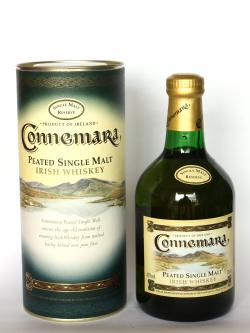
This dram has a white-like color.
Nose (88): inexistent. sweet, fruity, spicy, peat, citrus, tropical fruits: mango, chocolate. First nosing data is innacurate as the previous tasting sheet lacked of this field.
Palate (88): . sweet malt, wood, grain and cereals, a bit vanilla. Bouquet data is innacurate as the previous tasting sheet lacked of this field.
Finish (88): no finish. fruity, mango, wood. Finish length is innacurate as the previous tasting sheet lacked of this field.
So based on other whiskies I have already tasted I rate this Connemara with 88 points over 100.
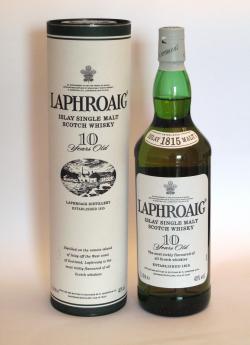
This dram has a white-like color.
Nose (88): inexistent. peat, iodine, salt, a little sweetness malt. First nosing data is innacurate as the previous tasting sheet lacked of this field.
Palate (96): . sweet, many peat, barley, some peat. Bouquet data is innacurate as the previous tasting sheet lacked of this field.
Finish (92): no finish. many peat and sea. Finish length is innacurate as the previous tasting sheet lacked of this field.
So based on other whiskies I have already tasted I rate this Laphroaig 10 year with 92 points over 100.

Busy month!. I am “throwing the house out of the window” spending beyond usual, but what the hell! It is Christmas. That and the fact that UK is increasing their VAT from 17.5% to 20% on Jan, 1 and I think there is something about increasing alcohol taxes too.
So this order, is from Master of Malt, with some bottles that I wanted and lots of samples.
The full size bottles are:
And the samples:

DYC stands for Destilerias y Crianza del Whisky ( distilling and maturation of whisky ) and it is an enterprise created in 1958 by Nicomedes Garcia Gomez. He started working on his father’s humble distillery of liquours at Valverde del Majano in Segovia, creating in 1919, with just only 18 years, Anis Castellana.
Nicomedes was a bussinessman and started all kind of things like a bus company, a marketing agency, a ships company. But he started making whisky just by bad luck.
In 1929 a batch of Mahou beer was rejected by a client because it was faulty. So instead of dropping the beer, he distilled it and stored in oak butts. After three years he gave a try to the potion and he realized that it wasn’t that bad at all, so he spent all the war drinking that whisky and started up the interest in distilling whisky.

In 1955, after being travelling around Scotland he talked with some friends and they founded a whisky destillery at Palazuelos de Eresma on the place where the old Marques del Arco’s mill was standing. The place was choosen for the great quality of the water supply from the river Eresma, the good climate for whisky maturation so near the sierra de Gredos and the near supply of good quality barley from the fields of Castilla.
The first distillation started in February of 1959 after having fought to change the law that forbid distillation of malt in Spain. It wasn’t till 1963 when the firsts bottles were made available to consumers.
The DYC distillery includes the distilling factory, a bottling plant and a warehouse for maturation.
DYC began to grow exponentially and by 1987 its sales stock up to 40 million € and owned the 46% of the spanish market. DYC even bought a scottish distillery, Lochside, to secure an extra supply of whisky to create their blends.
In 1989 DYC was sold to Pedro Domecq group and at a later time sold again to Beam Global.

DYC uses a double distillation process similar to scotch whisky. The mash is distilled in pot stills made with the same techniques than scottish ones.
For the grain distillation, that is done in Valverde del Majano, DYC uses a column still. The grain is mainly corn.
Later whisky is usually matured in american oak barrels of 190 litres that contained bourbon before. The angel’s share is around 3%.
Malt whisky is later blended with grain whisky prior to bottling. Bottling is also done at Valverde del Majano on the distillery plant.
DYC has now two plants in Segovia, with around 100 workers and produce annually around 2.3 million litres.
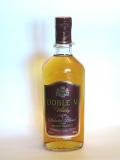
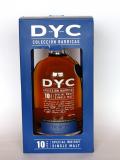
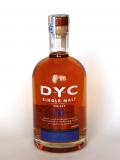
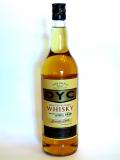
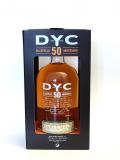
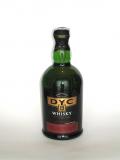
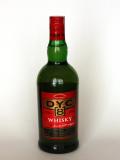
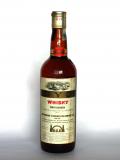
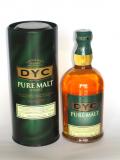
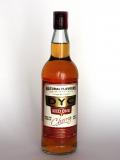
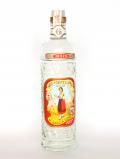
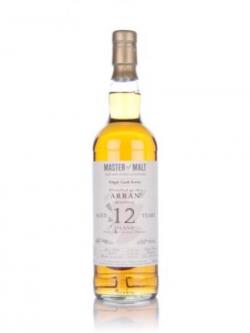
This dram has a white-like color.
Nose (96): inexistent. fruity, strawberries, honey, wood. First nosing data is innacurate as the previous tasting sheet lacked of this field.
Palate (96): . hot on the mouth, fruits, barley, wood, vanilla, honey, sweet. Bouquet data is innacurate as the previous tasting sheet lacked of this field.
Finish (92): no finish. some honey, vanilla and barley sweetness. Finish length is innacurate as the previous tasting sheet lacked of this field.
So based on other whiskies I have already tasted I rate this Arran 12 years old Single Cask Master of Malt with 95 points over 100.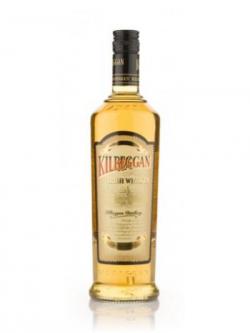
This dram has a gold-like color.
Nose (79): average. honey, vanilla, floral, mint, toffee.
Palate (85): light, smooth. honey, malt, wood, pears, spices, floral.
Finish (83): average. peat, floral, honey, spices.
So based on other whiskies I have already tasted I rate this Kilbeggan with 82 points over 100.
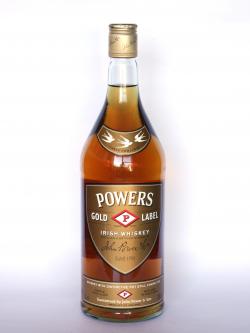
This dram has a white-like color.
Nose (56): inexistent. alcohol, sweet, vanilla and barley.. First nosing data is innacurate as the previous tasting sheet lacked of this field.
Palate (72): . vanilla, a little sweetness, grain and barley.. Bouquet data is innacurate as the previous tasting sheet lacked of this field.
Finish (72): no finish. hot, but short. woody. Finish length is innacurate as the previous tasting sheet lacked of this field.
So based on other whiskies I have already tasted I rate this Power's Gold Label with 67 points over 100.
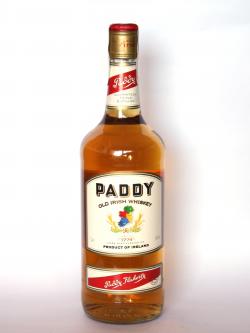
This dram has a white-like color.
Nose (60): inexistent. alcohol, vanilla, sweetness, a little grain. First nosing data is innacurate as the previous tasting sheet lacked of this field.
Palate (88): . sweet, vanilla, grain like in bourbon.. Bouquet data is innacurate as the previous tasting sheet lacked of this field.
Finish (80): no finish. vanilla, nuts and wood. Finish length is innacurate as the previous tasting sheet lacked of this field.
So based on other whiskies I have already tasted I rate this Paddy with 76 points over 100.
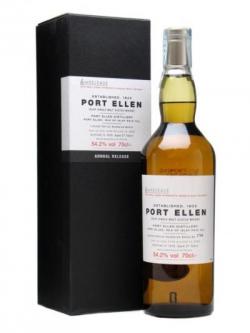
This dram has a white-like color.
Nose (92): inexistent. sweet, fruits, peat. really hot. First nosing data is innacurate as the previous tasting sheet lacked of this field.
Palate (96): . hot, salt, peat, wood, sweet malt, cake and berries. Bouquet data is innacurate as the previous tasting sheet lacked of this field.
Finish (96): no finish. long, peat and cake, sweetness. Finish length is innacurate as the previous tasting sheet lacked of this field.
So based on other whiskies I have already tasted I rate this Port Ellen 6th release 27 year with 95 points over 100.
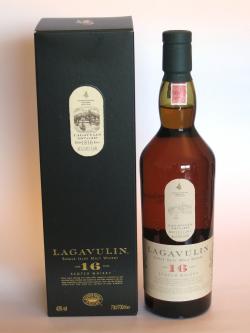
This dram has a white-like color.
Nose (96): inexistent. sweet peat, floral, vanilla, cherries and berries, oak. First nosing data is innacurate as the previous tasting sheet lacked of this field.
Palate (96): . sweet, oak, peat. hot, oily, complex. Bouquet data is innacurate as the previous tasting sheet lacked of this field.
Finish (92): no finish. long, peat and sweet. Finish length is innacurate as the previous tasting sheet lacked of this field.
So based on other whiskies I have already tasted I rate this Lagavulin 16 year with 95 points over 100.

This dram has a white-like color.
Nose (92): inexistent. fruity, sweet, malt, floral, peat. First nosing data is innacurate as the previous tasting sheet lacked of this field.
Palate (88): . hot! sweet, oak, fruity, peat. Bouquet data is innacurate as the previous tasting sheet lacked of this field.
Finish (88): no finish. looong, peat and wood and somesweet. Finish length is innacurate as the previous tasting sheet lacked of this field.
So based on other whiskies I have already tasted I rate this Lagavulin 12 year Special Reserve with 89 points over 100.
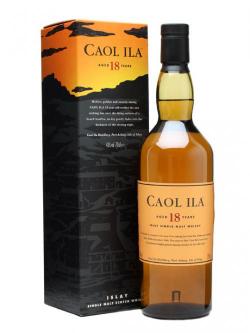
This dram has a white-like color.
Nose (84): inexistent. fruity, melon, a little peat, malt sweetness,a bit wood and salt. First nosing data is innacurate as the previous tasting sheet lacked of this field.
Palate (80): . sweet and fruity, pears. Bouquet data is innacurate as the previous tasting sheet lacked of this field.
Finish (84): no finish. long, peaty and hot. Finish length is innacurate as the previous tasting sheet lacked of this field.
So based on other whiskies I have already tasted I rate this Caol Ila 18 Year Old Islay Single Malt Scotch Whisky with 83 points over 100.
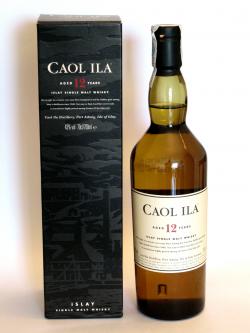
This dram has a white-like color.
Nose (92): inexistent. sweet, honey, vanilla, peat, floral, citrus, salt, iodine, peat. First nosing data is innacurate as the previous tasting sheet lacked of this field.
Palate (88): . sweet and peaty, salty. Bouquet data is innacurate as the previous tasting sheet lacked of this field.
Finish (84): no finish. peat , vanilla, sweet. Finish length is innacurate as the previous tasting sheet lacked of this field.
So based on other whiskies I have already tasted I rate this Caol Ila 12 year with 88 points over 100.
![]() Master of
Malt
Master of
Malt
"The best whisky prices, great
delivery and a fast and friendly support."
![]() The
Whisky Exchange
The
Whisky Exchange
"A huge selection of
old and collectible whiskies along with the latest releases."
![]() The Drink
Shop "Most visited UK supplier with big
amount of whiskies and any other spirit."
The Drink
Shop "Most visited UK supplier with big
amount of whiskies and any other spirit."
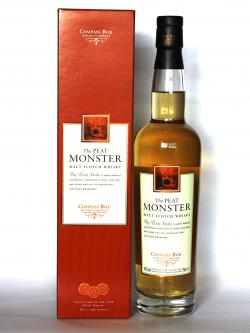
Compass Box The Peat Monster
£39.45
Find great whisky gifts
 recommended Lagavulin 12 Year Old / Bot.2013 / 12th Release Islay Whisky
recommended Lagavulin 12 Year Old / Bot.2013 / 12th Release Islay Whisky
 recommended Cardhu 21 Year Old / Bot. 2013 Speyside Single Malt Scotch Whisky
recommended Cardhu 21 Year Old / Bot. 2013 Speyside Single Malt Scotch Whisky
 recommended Caol Ila Unpeated / Stitchell Reserve / Bot.2013 Islay Whisky
recommended Caol Ila Unpeated / Stitchell Reserve / Bot.2013 Islay Whisky
 recommended Sagatiba Cachaça Silver
recommended Sagatiba Cachaça Silver
 recommended Boca Loca Cachaça
recommended Boca Loca Cachaça
 recommended Terra Dourada Cachaça (Ouro)
recommended Terra Dourada Cachaça (Ouro)
 recommended Sagatiba Cachaça Gold
recommended Sagatiba Cachaça Gold
 recommended Terra Vermelha Organic Cachaça
recommended Terra Vermelha Organic Cachaça
 recommended Abelha Silver Cachaça
recommended Abelha Silver Cachaça
 recommended Octomore Edition 02.1
recommended Octomore Edition 02.1
 See more
activity
See more
activity